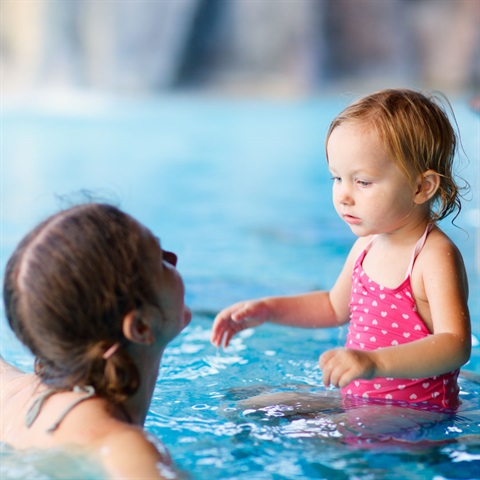Why Learn to Swim?

Learning to Swim is a Skill For Life
Living in Australia we are surrounded by water, with some of our most popular recreational past times taking place on or near the water whether it is a beach, lake, river or pool.
Water familiarisation classes build confidence and introduce children to basic water safety; learning to swim is a vital skill for all ages, especially children.
Ensuring you or your child receives quality teaching is important to ensure confident and capable swimmers when exposed to any aquatic environments or activities.
Our Learn to Swim program provides swimming classes suitable for infants, children and adults of all abilities. The programs are structured to promote water familiarisation, safety, correct stroke technique and personal development within an enjoyable and safe environment.
Our AUSTSWIM certified instructors are caring, friendly and will guide each student from a non-swimmer to a proficient, confident and safe swimmer.
Keep Watch!
Royal Life Saving’s ‘Keep Watch’ program stresses the importance of supervision.
Regardless of the aquatic location, supervision means being within arm’s reach of your children whenever they are in, on or around water.
Drowning deaths can occur in the time it takes to answer the doorbell, run and get a change of clothes or make a cup of coffee. Drowning is swift and silent which is why parents must be within arm’s reach of young children in water.
The ‘Keep Watch’ program consists of four key tips:
- Young children need to be supervised constantly (within arm’s reach) whenever they are in, on or around water
- Restricting a young child’s access to water either by putting a barrier around the water or around the child is also effective in preventing drowning deaths
- Undertaking water familiarisation with your child will help you to become aware of the dangers
- Learning resuscitation can help if an incident does occur. Learning these techniques today may save your child’s life.
For more information see the Royal Life Saving website.
Water Safety Week
Water Safety Week occurs the second last week of every session. Each session, students are asked to wear pyjamas that can be worn in the water.
Colour Visibility Test
Have you heard about the colour visibility test?
While nothing can trump close parental supervision, the colour of a child's swimsuit, rash top or Personal Flotation Device (PFD) can make a big difference to their visibility in water.
It is recommended to avoid white or light blue swimmers as a child will virtually disappear under water. Instead, stick to bright neons where possible, particularly neon pink and neon orange.
For more information about the colour visibility test click here.